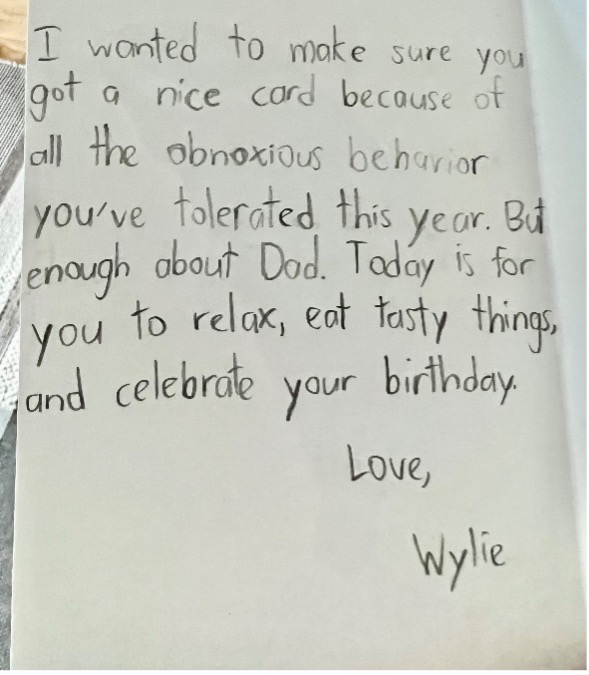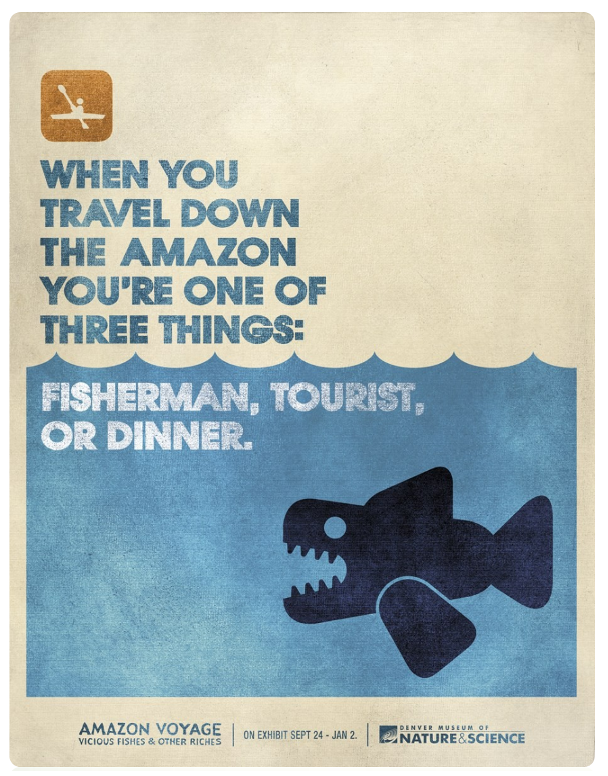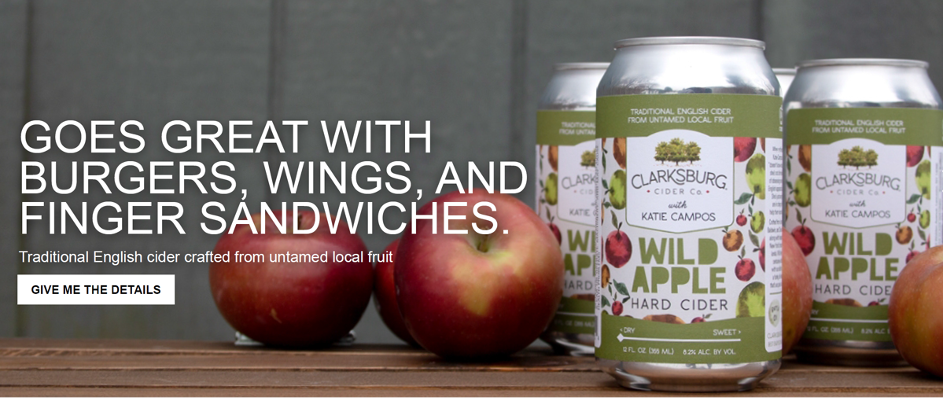You don’t need to have children to think of a handful of milestones that parents typically celebrate.
I’m not talking about softballs like the sprouting of a first tooth or the shedding of a last diaper. Wait long enough and those moments are bound to happen on their own.
I appreciate firsts that take effort. Or, even better, daring.
So, you can imagine how thrilled I was when my twelve-year-old son Wylie pulled off a stunt that many adults can’t manage …
He landed his first joke.
This wasn’t some bush-league zinger that ends with something like “teenagers, am I right?”
Instead, he used professional-grade misdirection to gently quiet our suspicions before shattering our funny bone with the punchline.
And he buried it in the last place we expected a laugh—his stepmother’s birthday card. Have a look …

Don’t get me wrong, Wylie’s always been a funny little dude. Ever since he started warming up family parties with entry-level gems like: “A skeleton walks into a bar … he asks for a beer and a mop.”
What made his first original joke so impressive wasn’t just the words he chose, but how he chose to assemble them. Beyond vocabulary, there was context and cadence to consider.
That’s the difference between typing and writing, friends.
Think about it …
He could have easily said “I wanted to give you a nice card because you have to deal with dad.” Same sentiment, but completely forgettable. And borderline rude.
But with a little more tinkering, Wylie waltzed us under an arbor of the expected before turning a firehose of dopamine on our brains.
He not only got his message noticed, but he drained my own card of its potency in the process. Turd.
If you’re saying to yourself “Hey, Matt, sounds like you got punked by the Von Restorff Effect,” gold star for you. 🤩
The Von Restorff Effect (also known as the “isolation effect”) is the human tendency to notice and recall things that stand out.
It’s about how context or surprise can attract your audience’s interest. And if you’re not using it in your marketing, you risk blending in with everything surrounding your message.
As humans (that’s us!) we’ve evolved to notice pattern disruption—things that are unexpected or abnormal. Show us a series of sameness and we begin to nod off. But hit us with something we never saw coming and you’ve got our attention.
A familiar brand that uses the isolation effect to stand out and drive sales is Persil laundry detergent.
Laundry detergent is a category that dominates an entire aisle at the grocery store. And Persil gets clothes clean just like everyone else. So, to get noticed among their competitors who were consumed with waging a war on dirt, Persil adopted the counterintuitive idea that getting dirty was a good thing.
Then, to extend their unique position beyond their traditional marketing efforts, Persil created the Dirt Is Good Project—a program that empowers kids, parents, and teachers to make a positive impact on our planet.

This helped to create favorable separation between Persil and their competitors in consumers’ minds. So, when confronted with a wall of detergent options online or in stores, shoppers had a better chance of recalling Persil over other brands.
No time to overhaul your brand positioning? Fine.
You or your team can try using the isolation effect on your next piece of copy.
My pal Dan Nelken features a technique called the “List and Twist” in his book A Self-Help Guide for Copywriters. Snag it at your local bookstore. Or, if you’re into devil worship, here.
Dan says:
“The List and Twist is an easy way to inject some personality into a piece of writing that might otherwise be straight. It’s exactly what you think it is, a list (with at least 3 items) where the last item on the list is unexpected.”
Here’s an example from Dan’s book …

… and from Dan’s shared grocery list.

Just for fun (and for money), I tried a List and Twist for a new flavor of Clarksburg Cider that uses a traditional English approach to cidermaking.

From writing eye-catching headlines to presenting your product or service in an unusual way, you can use the isolation effect to get your audience to notice and remember your message.
Just don’t do something so extreme that your approach overshadows your brand (like the Super Bowl commercial you talk about but can’t recall whom it’s for). There is such a thing as too weird. So, always make sure the impression you make is connected to your brand.
Cool? Cool.
Here’s a song to play you out >>>
See you next time. – Matt
If you want a fresh marketing nugget emailed to you every two weeks (give or take), join here.



